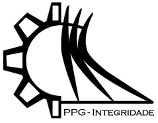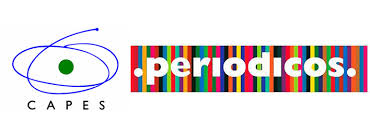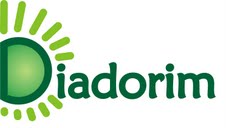APLICAÇÃO DE UM DESCRITOR INVARIANTE DA TRANSFERÊNCIA DE CALOR CONJUGADA POR CONVECÇÃO FORÇADA-CONDUÇÃO NO RESFRIAMENTO DE AQUECEDORES 3D PROTUBERANTES EM CANAIS
DOI:
https://doi.org/10.26512/ripe.v2i12.21353Palavras-chave:
Descritor invariante. Coeficientes de influência conjugados. Convecção forçada. Condução. Predição de temperaturas.Resumo
Neste trabalho foi realizado um estudo numérico da aplicação de um descritor invariante da transferência de calor conjugada por convecção forçada-condução no resfriamento de três aquecedores 3D protuberantes montados em um substrato condutivo em um canal retangular horizontal com escoamento laminar. As temperaturas médias dos aquecedores foram relacionadas, independente da potência dissipada em cada um, através de uma matriz G+ com coeficientes de influência conjugados g+. O aumento da temperatura de cada aquecedor no canal foi quantificado de tal forma que as contribuições devido ao autoaquecimento e à esteira térmica fossem claramente identificadas. Para uma dada geometria, campo de escoamento, propriedades termofísicas do fluido e dos sólidos, estes coeficientes são adimensionais e invariantes com a taxa de dissipação de calor na configuração dos aquecedores. Os resultados foram obtidos numericamente por meio do software ANSYS/ FluentTM 15.0, para números de Reynolds na faixa de 500 a 2.000 e altura dos aquecedores protuberantes entre 10% e 35% em relação à altura total do canal. Alguns exemplos foram apresentados demonstrando os benefícios da aplicação dos coeficientes de influência conjugados na predição de temperaturas do processo de resfriamento conjugado de aquecedores discretos em canais.
Downloads
Referências
Antonini Alves, T., 2010. Resfriamento Conjugado de Aquecedores Discretos em Canais. Tese de Doutorado em Engenharia Mecânica, Universidade Estadual de Campinas/Campinas.
Antonini Alves, T., & Altemani, C. A. C., 2012. An invariant descriptor for heaters temperature prediction in conjugate cooling. International Journal of Thermal Sciences, vol. 58, pp. 92”“101.
Antonini Alves, T., Santos, P. H. D., & Barbur, M. A., 2015. An invariant descriptor for conjugate forced convection-conduction cooling of 3D protruding heaters in channel flow. Frontiers of Mechanical Engineering, vol. 10, pp. 263-276.
Anderson, A. M., & Moffat, R. J., 1992a. The adiabatic heat transfer coefficient and the superposition kernel function: part 1 ”“ data for arrays of flatpacks for different flow conditions. Journal of Electronic Packaging, vol. 114, pp.14-21.
Anderson, A. M., & Moffat, R. J., 1992b. The adiabatic heat transfer coefficient and the superposition kernel function: part 2 ”“ modeling flatpack data as a function of channel turbulence. Journal of Electronic Packaging, vol. 114, pp. 22-28.
ANSYS/FluentTM. Tutorial, 2011: Solving a Conjugate Heat Transfer Problem using ANSYS/FluentTM. pp. 1-30.
Bar-Cohen, A., Watwe, A. A., & Prasher, R. S., 2003. Heat transfer in electronic equipment. In Bejan, A., & Kraus, A. D., eds, Heat transfer handbook, pp.947-1027. John Wiley & Sons. chap.13.
Bergman, T. L., Lavine, A. S., Incropera, F. P., & Dewitt, D. P. Fundamentals of heat and mass transfer, New Jersey, USA: John Wiley & Sons., 1080 p., 2014.
Davalath, J., & Bayazitoglu, Y., 1987. Forced convection cooling across rectangular blocks. Journal of Heat Transfer, vol. 109, pp. 321”“328.
Grigull, U. Heat Conduction, New York, USA: Hemisphere Publishing Corporation, 187p., 1987.
Hacker, J. M., & Eaton, J. K., Heat transfer measurements in a backward-facing step flow with arbitrary wall temperature variations. Stanford University, Stanford, USA: Thermosciences Division Research Report MD”“71, 1995.
Kays, W. M., Crawford, M. E., & Weigand, B. Convective heat and mass transfer, New York, USA: McGraw-Hill, 546p, 2005.
Morris, G. K., & Garimella, S. V., 1996. Thermal wake downstream of a three-dimensional obstacle. Experimental Thermal Fluid Science, vol.12, pp. 65-74.
Patankar, S. V., 1980. Numerical heat transfer and fluid flow. Hemisphere Publishing Corporation.
Zeng, Y., & Vafai, K., 2009. An investigation of convective cooling of an array of channel-mounted obstacles. Numerical Heat Transfer, Part A, vol. 55, pp. 967”“982.
Downloads
Publicado
Como Citar
Edição
Seção
Licença
Autores que publicam nesta revista concordam com os seguintes termos:
Autores mantém os direitos autorais e concedem à revista o direito de primeira publicação, sendo o trabalho simultaneamente licenciado sob a Creative Commons Attribution License o que permite o compartilhamento do trabalho com reconhecimento da autoria do trabalho e publicação inicial nesta revista.
Autores têm autorização para assumir contratos adicionais separadamente, para distribuição não-exclusiva da versão do trabalho publicada nesta revista (ex: publicar em repositório institucional ou como capítulo de livro), com reconhecimento de autoria e publicação inicial nesta revista.
Autores têm permissão e são estimulados a publicar e distribuir seu trabalho online (ex: em repositórios institucionais ou na sua página pessoal) a qualquer ponto antes ou durante o processo editorial, já que isso pode gerar alterações produtivas, bem como aumentar o impacto e a citação do trabalho publicado.









